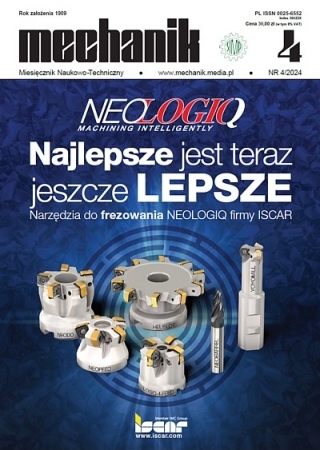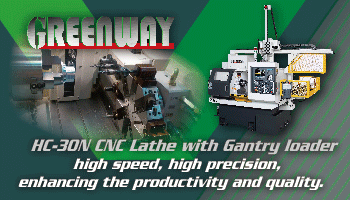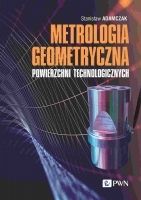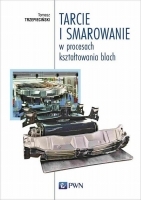Propozycje zastosowania układów prętowo-cięgnowych w konstrukcjach budowlanych *
Proposals of applications of tension-strut systems in building structures
Mechanik nr 07/2017 - CAD/CAM
STRESZCZENIE: Układy prętowo-cięgnowe należą do najbardziej ekonomicznych rodzajów systemów konstrukcyjnych. Ich elementy składowe poddane są działaniu albo sił ściskających, albo sił rozciągających. Wstępne sprężenie jest warunkiem koniecznym do funkcjonowania tych układów. Dzięki temu odznaczają się one stosunkowo dużą sztywnością oraz wymagają użycia względnie niewielkiej ilości materiału konstrukcyjnego niezbędnego do ich zbudowania. Najczęściej są stosowane w konstrukcjach mostów wiszących lub podwieszonych oraz jako struktury nośne lekkich przekryć dachowych, zwłaszcza o dużej rozpiętości. Współcześnie formuła konstrukcyjna układów prętowo-cięgnowych jest coraz szerzej stosowana m.in. w systemach dużych ścian osłonowych i budynkach wielopiętrowych, a także jest proponowana w konstrukcjach fundamentów. Artykuł przedstawia kilka wybranych postaci takich konstrukcji, opracowanych przez autora do różnych celów użytkowych. Złożoność takich struktur sprawia, że podczas ich projektowania i wznoszenia na placu budowy konieczne jest wykorzystanie odpowiednich metod numerycznych.
SŁOWA KLUCZOWE: układ konstrukcyjny, struktura prętowo-cięgnowa, przekrycie dachowe, fundament, model numeryczny
ABSTRACT: Tension-strut systems belong to the most economic types of structural systems. Component parts are subjected to act only of compression forces or they are subjected to act only of tension forces. Suitable pre-stressing is the necessary condition of their proper operational use. Due to this feature they are of relatively big spatial stiffness and they require relatively small consumption of materials needed to their construction. They are mostly applied in bearing structures of hanging or suspension bridges and in support systems of the lightweight roof covers, particularly of big spans. Construction formula of the tension-strut systems is nowadays widely applied in structures of the large curtain walls, in support structures of multi-story buildings and it is proposed to use in the foundation structures. The paper presents some selected types of such structures worked out by the author for various useful purposes. Complexity of these structures requires application of appropriate numerical methods during processes of the design and of the assembly stage in the building site.
KEYWORDS: structural system, tension-strut structure, roof cover, foundation, numerical model
BIBLIOGRAFIA / BIBLIOGRAPHY:
- Makowski Z.S. “Analysis, design and construction of double-layer grids”. London: Applied Science Publishers, 1981.
- Allen E., Zalewski W., Boston Structures Group. “Form and forces. Designing efficient, expressive structures”. Hoboken, New Jersey: John Wiley & Sons, 2010.
- Berger H. “Light structures – structures of light: the art and engineering of tensile architecture”. Basel, Switzerland: Birkhäuser Verlag, 1996.
- Schlaich J. “On some recent lightweight structures”. Journal of the International Association for Shell and Spatial Structures. 43, 2 (2002): s. 69–79.
- Otto F. “Natürliche Konstruktionen”. Stuttgart: Deutsche Verlags-Anstalt, 1982.
- Geiger D.H. “Roof structure”. United States Patent, Patent No. 4,736,553., 12 April 1988.
- Geiger D.H., Stefaniuk A., Chen D. “The design and construction of two cable domes for the Korean Olympics”. Proceedings of the IASS Symposium on Shells, Membranes and Space Frames. Osaka, Japan, 1986, s. 265–272.
- Rębielak J. “Simple form of structural system proposed for cable domes”. Lightweight Structures in Civil Engineering. Local Seminar of IASS Polish Chapter, Warsaw-Wrocław, 7th December, 2001, s. 56–58.
- Rębielak J. “Shaping of space structures. Examples of applications of Formian in design of tension-strut systems”. Wrocław: Oficyna Wydawnicza Politechniki Wrocławskiej, 2005.
- Nooshin H., Disney P. “Formex configuration processing III”. International Journal of Space Structures. 16, 1 (2001): s. 1–56.
- Snelson K. “Snelson on the tensegrity invention”. International Journal of Space Structures. Special issue on Morphology and Architecture. Guest editor: H. Lalvani. 11, 1&2 (1996): s. 43–48.
- Fuller R.B. “Tensile-integrity structures”. US Patent No. 3,063,521, November, 1962.
- Rębielak J. “Basic groups of structural systems of cable domes shaped by means of tetrahedral modules”. Lightweight Structures in Civil Engineering. Local Seminar of IASS Polish Chapter, Warsaw-Wrocław, 7th December, 2001, s. 64–67.
- Rębielak J. “Proposals of application of system of combined foundation for buildings located in earthquake areas and in sea bays”. Iranian Journal of Structural Engineering. 2, 1 (2015): s. 48–54.























